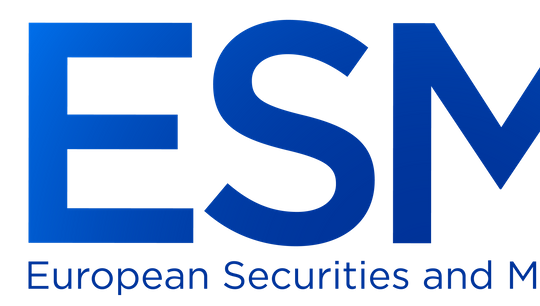Virtual data rooms
By Eric Lazear, J.P. Morgan Capital Advisory Group
Published: 30 November 2020
Introduction
The COVID-19 pandemic has caused disruptions on businesses throughout the world with the alternative fund space being no exception. Despite some firms planning (or starting) to return to the office, Investment managers and allocators are still dealing with various hurdles including travel blocks and pushback on in-person meetings as some people have restricted access to their offices for external parties. Assuming that this scenario is likely to continue for the remainder of 2020 and into next year, it is vital for managers to find new methods to communicate with allocators to conduct due diligence remotely.
With the definition of this new “normal” yet to be determined, allocators are contemplating ways to conduct all of their due diligence remotely. One of the biggest hurdles in virtual due diligence is having an allocator get comfortable with the operational set-up of the underlying manager. Typically allocators review all the necessary documentation prior to the onsite (with some sensitive documents being viewed while onsite); however given the current environment, most managers have been sharing these documents with allocators via screen share during the actual virtual due diligence meeting.
In some cases this is okay, but for larger documents, allocators have stated that they would prefer to take a deeper look as part of their desktop review, which would entail a more thorough assessment of the manager and fund documentation prior to the meeting. In June, AIMA hosted a virtual roundtable for managers and allocators to discuss the current environment among other topics. One key metric noted was that screen sharing is still the most common method of sharing information by managers. In particular, allocators expressed a preference for being able to review lengthy documents at their own pace rather than flipping through pages during the actual virtual meeting via screen share.
To avoid the hurdles mentioned above, a key service provider that is finding an entirely new use case are Virtual Data Rooms (“VDR”); an online repository that is used to secure, store and distribute documents. Given the important role VDR’s can play, it is imperative to understand the benefits of using one, key considerations and the potential costs.
1. VDR benefits
There are many benefits to using a VDR, but five of the most important are:
Data repository
Provides a central location for your data that can be organised, secured and accessed by each allocator
This allows you to securely share documents rather than emailing zip files
Perception
Sharing documents via a VDR presents a professional and institutional look to allocators
Improves communication transparency - essential in virtual world
Customize user access
Ability to share documents with customized user rights (view, edit, print, etc.). This controls what user can do on an individual basis, allowing for multiple parties to securely use the data room at once
Dashboard & analytics
Obtain statistics around usage by each party/user, which documents are viewed most, longest viewed documents, and recent searches – allows manager to have better insight into which documents are most important to allocators
CRM integration
Some VDR’s have the ability to integrate directly into your Customer Relationship Management (CRM) system. This allows for more targeted emailing and data tracking
2. Considerations
With many variables to consider, some that we believe are essential are:
Security
Does the VDR have the proper encryption you require (e.g. 256-bit encryption/Military Grade)
Have the controls been independently reviewed and tested (SSAE18, ISO 27001 certified servers)
Information rights management
Ability to customize document permissions related to copying, viewing, editing, etc. to ensure features match your needs
Control each user’s entitlements on an individual basis (e.g. timed access to sensitive documentation etc.)
Ease of use
Need to assess whether the addition of a VDR will seamlessly incorporate into your current workflow and be intuitive for the viewer of the data
Analytics
Does the VDR provide you with the tools and data to better communicate with allocators as well as providing more targeted content
Ex: Click trails, downloads/views per day, most active users, most viewed docs, recent searches
Screenshots
Are there ways to mitigate the risk of someone taking a screen- shot of your documents? Providers have different options here from dynamic watermarking to screen shields
Current infrastructure
Can you leverage your existing IT set-up as a VDR?
Example: SharePoint
Pricing
The pricing of each VDR may vary so you need to review how the cost is determined. Some use different factors to arrive at the cost: managed users, number of data rooms, users/data room guests or a combination of these variables. Some may just look at the number of users – this would include each allocator as a user with replacements, i.e. if an allocator redeems then that slot opens up for another potential user. Some vendors may also charge per document and certain features can also carry an additional cost.
Conclusion
No one really knows what the future holds and what the new normal will look like, but conducting due diligence virtually will be here to stay. Therefore, it is vital that Managers ensure they have the proper infrastructure and communication mechanisms in place to securely and efficiently share information and documentation to allocators. VDR’s are one technological way to achieve this, providing transparency, security, control as well as creating the perception of institutionalization that is required by allocators in the current environment. With this in mind, understanding the various features of VDR’s is essential given the high level of competition. If you have any questions on VDR’s or the various providers in the space, please feel free to reach out.
Disclaimer
© 2020 JPMorgan Chase & Co. All rights reserved. J.P. Morgan is the global brand name for JPMorgan Chase & Co. and its subsidiaries and affiliates worldwide. This Presentation is for illustrative and discussion purposes only, and should not be relied upon as business, investment, financial, tax, legal, regulatory or equivalent advice. The Company should consult with its own independent advisors when making any determinations related to the subject matter of the Presentation. This information is provided without warranties of any kind, either express or implied, including any implied warranties of accuracy, completeness, fitness for a particular purpose, or non-infringement. All product names, company names and logos mentioned herein are trademarks or registered trademarks of their respective owners. Access to financial products and execution services is offered through J.P. Morgan Securities LLC (“JPMS”) and J.P. Morgan Securities plc (“JPMS plc”). Clearing, prime brokerage and brokerage custody services are provided by J.P. Morgan Securities LLC (“JPMS”) in the US and JPMS plc in the UK. An enhanced securities lending product is offered through J.P. Morgan Prime, Inc. (“JPMPI”).” Bank custody services are provided by JPMorgan Chase Bank, N.A. (“JPMCB”). JPMS and JPMPI are registered US broker dealer affiliates of JPMorgan Chase & Co., and are members of FINRA and SIPC. J.P. Morgan Securities plc is authorized by the Prudential Regulation Authority and regulated by the Financial Conduct Authority and the Prudential Regulation Authority in the UK. J.P. Morgan Securities (Asia Pacific) Limited is regulated by the HKMA.
FOR INSTITUTIONAL CLIENT USE ONLY



